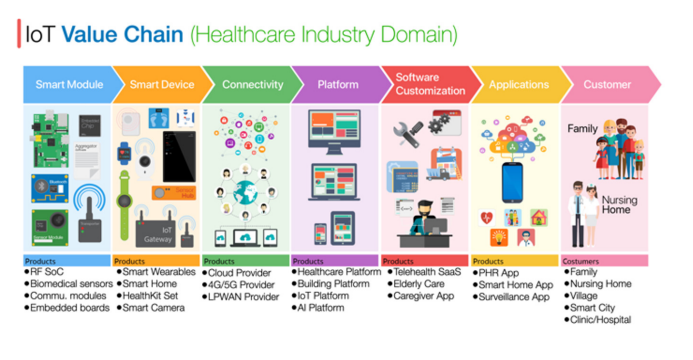Integrated Healthcare Services for Ageing in Place
Main Article Content
Abstract
This study investigates how healthcare practitioners handle significant circumstances of providing medical assistance and treatments to patients and what challenges they face. Drawing on key healthcare stakeholders and mixed smart living methods, we develop a guideline service protocol for Internet of Things (IoT) solution to help healthcare stakeholders in coping with operational difficulties. IoT technology is one of the key determinants that empowers healthcare professionals to achieve their tasks, and our goal is to study the functions that provides to local citizens, especially older people, and to evaluate how the functions and platform could assist corporate compliance policies to increase the efficiency of healthcare service. Our field experiments have indicated a need to educate healthcare users about IoT application that provide advantages in decision making. In addition, our research has explored and evaluated the impacts and factors that influence the development and collaboration by allowing workflows of healthcare stakeholders and by following integrated smart living platform and required service protocol.
Article Details

This work is licensed under a Creative Commons Attribution-NonCommercial-NoDerivatives 4.0 International License.
References
Altinay, L. and Paraskevas, A. (2008) Planning Research in Hospitality and Tourism. Oxford: Butterworth-Heinemann.
Alwan, M. (2009). Passive in-home health and wellness monitoring: overview, value and examples. Conference Proceedings-IEEE Engineering in Medicine and Biology Society, 2009, 4307-4310.
Arun, O., and Holdsworth, J.K. (2020) Integrated social and health care services among societies in transition: Insights from Turkey, Journal of Ageing Studies,53, 1-7.
Baruch, Y. and Holtom B.C. (2008). 'Survey response rate level and trends in organizational research'. Human Relations, 61, 1139-1160.
Bhattacherjee, A., & Hikmet, N. (2007). Physicians' resistance toward healthcare in- formation technology: A theoretical model and empirical test. European Journal of Information Systems, 16(6), 725-737.
Farivar, S, Abouzahra, M., and Ghasemaghaei, M (2020) Wearable device adoption among older adults: A mixed-methods study, International Journal of Information Management, 55, 1-14.
Frisardi. V. and Imbimbo, B.P. (2011). Gerontechnology for Demented Patients: Smart Homes for Smart Aging, Journal of Alzheimer's disease, 23, 143-146.
Fuchs, G.,and Reichel, A.(2011)' An exploratory inquiry into destination risk perceptions and risk reduction strategies of first time vs. repeat visitors to a highly volatile destination', Tourism Management,32, 266-276.
Harnett, P. J., Kennelly, S., and Williams, P. (2020) A 10 Step Framework to Implement Integrated Care for Older Persons, Ageing International, 45, 288-304.
Hassol A, Walker JM, Kidder D, Rokita K, Young D, Pierdon S, et al. Patient experiences and attitudes about access to a patient electronic health care record and linked web messaging. Journal of the American Medical Informatics Association: JAMIA. 2004; 11(6):505-13.
Hoque, M., R., Bao, Y., and Sorwar, G. (2016) Investigating actors influencing the adoption of e-Health in developing countries: A patient's perspective, Informatics for Health and Social Care, 1-7.
Jimenez G, Spinazze P, Matchar D, Koh Choon Huat G, van der Kleij RMJJ, Chavannes NH, Car Jet al., (2020), Digital health competencies for primary healthcare professionals: A scoping review., Int J Med Inform, Vol: 143, 1-8.
Martin, S., Kelly, G., et al. (2008). Smart home technologies for health and social care support. Cochrane Database of Systematic Reviews, (4), CD006412.
Mostakim Fattah, S.M., Sung, M.N., Ahn, I.Y.,Ryu, M.,and Yun, J. (2017), Building IoT Services for Aging in Place Using Standard-Based IoT Platforms and Heterogeneous IoT Products, Sensors, 17, 1-29. doi:10.3390/s17102311
Queiros, A., Cerqueira, M., Santos, M. and Rocha, N.P. (2017) Mobile Health to Support Ageing in Place: A Synoptic Overview, Procedia Computer Science, 121, 206-211.
Park, K., and Reisinger, Y. (2010) ' Differences in the Perceived Influence of Natural Disasters and Travel Risk on International Travel', Tourism Geographies,Vol.12,No.1, 1-24.
Peek, S.T.M.; Aarts, S.; Wouters, E.J.M (2017). Can Smart Home Technology Deliver on the Promise of Independent Living? In Handbook of Smart Homes, Health Care and Well-Being; Springer International Publishing: Cham,
Peek, S. T.M., Wouters, E. J.M., Hoof, J.V., Luijkx, K.G., Boeije, H.R, and Vrijhorf,H.J.M. ( 2014) Factors influencing acceptance of technology for aging in place: A systematic review, International Journal of Medical Informatics, 83, 235-248.
Reisinger, Y., and Mavondo, F. (2006)'Cultural Differences in Travel Risk Perception', Journal of Travel & Tourism Marketing,Vol.20,No.1, 13-31.
Thielke,S, Harniss, M., and Thompson, H.J. (2011) Maslow's Hierarchy of Human Needs and the Adoption of Health-Related Technologies for Older Adults, Ageing International, 37,4, 1-19.
Tsai, J. M., Cheng, M.J., Tsai, H.H., Hung, S.W and Chen, Y.L. (2019) Acceptance and resistance of telehealth: The perspective of dual-factor concepts in technology adoption, International Journal of Information Management, 49, 34-44.


